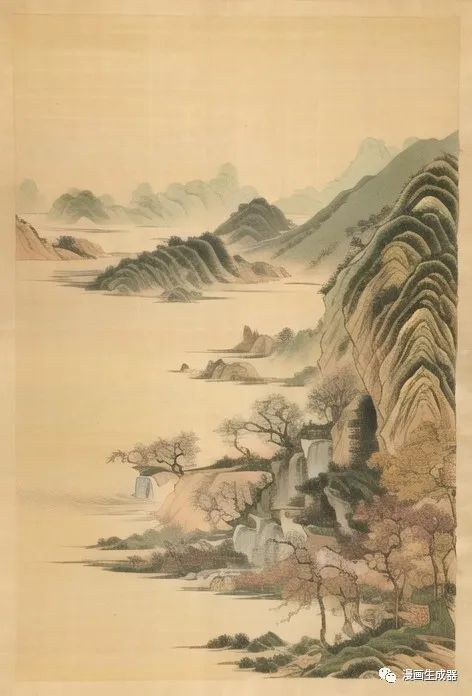Title: The Elegance of Chinese Poetry: A Brief Exploration
Chinese poetry, with its eloquent expression and profound meaning, stands as a pillar of Chinese culture. It’s a fascinating realm where language meets art, philosophy meets sentiment, and history meets the present. As high school students preparing to embark on a new chapter in life, understanding the essence of Chinese poetry can deepen your appreciation for our culture and provide a new perspective on life.Chinese poetry has a history of more than 2,000 years, with its origins traced back to the Book of Songs (Shijing) from the Zhou Dynasty. This anthology of 305 poems offers insights into ancient Chinas society, culture, and people’s daily lives.Tang Dynasty is often recognized as the golden age of Chinese poetry. Poets like Li Bai and Du Fu used vivid imagery and emotive language to express personal experiences, thoughts on social issues, or the beauty of nature. Their works reflect the human condition in its rawest form, and the themes they explored—love, friendship, nature, war, and social injustice—are still relevant today.Song poetry, or Ci, emerged during the Song Dynasty, evolving from its predecessor. Poets such as Su Shi and Li Qingzhao used more flexible tonal patterns and lengths to create rich, layered expressions. The ‘Ci’ form often conveys deep emotions and captures ephemeral moments of beauty, making it a favorite for expressing love and longing.The Yuan Dynasty introduced another form of poetry: the Qu. It was primarily a lyrical verse written for music, with Ma Zhiyuan being one of the most famous poets. These verses were often used in Chinese operas, adding a lyrical dimension to performances.Each style of Chinese poetry has its unique charm and rhythm, reflecting the socio-cultural context of its time. To truly appreciate Chinese poetry, try reading aloud, feeling the rhythm, and imagining the scenes. Notice the poets choice of words, the imagery they create, and the emotions they evoke.Chinese poetry is also a mirror to the soul of its people. The courage of Li Bai, the compassion of Du Fu, the wisdom of Su Shi, and the resilience of Li Qingzhao, all reflect in their verses. By studying these poets and their works, we can learn not only about our cultural heritage but also about the values and philosophies that have shaped our society.As we prepare to step into the future, lets carry forward the wisdom of the past. As Du Fu wrote, “The country is ruined, yet mountains and rivers remain.” No matter the challenges we face, the spirit of perseverance and resilience embodied in Chinese poetry will guide us forward. Let these timeless verses inspire us, provide comfort during tough times, and remind us of our roots as we navigate the journey of life.标题:中国诗词的优雅:简要探索中国诗词以其雄辩的表达和深邃的含义,被誉为中国文化的支柱。它是一个迷人的领域,语言在此遇见艺术,哲学在此遇见情感,历史在此与现在相遇。作为即将开启新生活篇章的高中生,理解中国诗词的精髓可以加深你对我们文化的欣赏,并提供新的生活视角。中国诗词有超过两千年的历史,其起源可追溯到周朝的《诗经》。这部305首诗的集合为我们提供了对古代中国社会、文化和人们日常生活的深入了解。唐朝通常被认为是中国诗词的黄金时代。诸如李白和杜甫的诗人运用生动的意象和感人的语言来表达个人经历、对社会问题的思考或对自然之美的赞美。他们的作品反映了人类最真实的境况,他们探索的主题—爱情、友情、自然、战争和社会不公—至今仍然具有相关性。宋词在宋朝时期崛起,从其前身中发展出来。如苏轼和李清照等诗人运用更灵活的音调和长度来创造丰富、层次丰富的表达。‘词’形式常常传达深深的情感,捕捉美的瞬间,使其成为表达爱情和渴望的最爱。元朝引入了另一种形式的诗词:曲。它主要是为音乐所写的抒情诗,其中马致远是最著名的诗人之一。这些诗经常被用在中国的戏剧中,为表演增添了抒情的维度。每种风格的中国诗词都有其独特的魅力和节奏,反映了其时代的社会文化背景。要真正欣赏中国诗词,试着大声朗读,感受节奏,想象场景。注意诗人的词语选择,他们创造的意象,以及他们唤起的情感。中国诗词也是其人民灵魂的镜子。李白的勇气,杜甫的同情,苏轼的智慧,李清照的坚韧,都在他们的诗篇中反映出来。通过研究这些诗人及其作品,我们不仅可以了解我们的文化遗产,还可以了解塑造我们社会的价值观和哲学。在我们准备步入未来的时候,让我们携带过去的智慧。如杜甫所写,“国破山河在”。无论我们面临什么挑战,中国诗词所体现的坚韧和韧性的精神都将引导我们前进。让这些永恒的诗篇激励我们,在艰难时期提供安慰,并在我们航行人生之旅时提醒我们的根源。拥抱科技,持续学习
声明:本站所有文章,如无特殊说明或标注,均为本站原创发布。任何个人或组织,在未征得本站同意时,禁止复制、盗用、采集、发布本站内容到任何网站、书籍等各类媒体平台。如若本站内容侵犯了原著者的合法权益,可联系我们进行处理。




